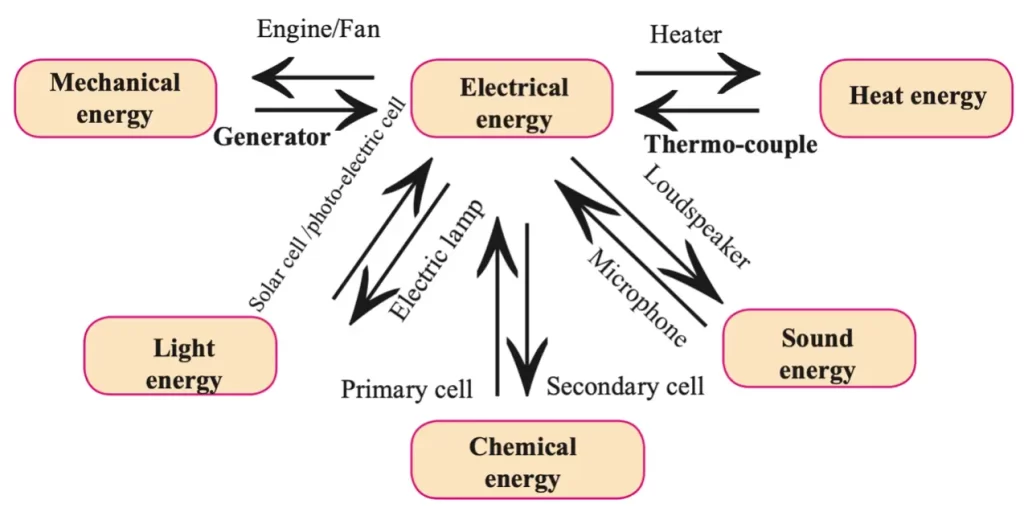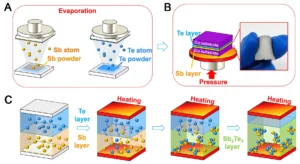Work and Energy
‘Work is said to be done when a force applied on an object causes displacement of the object.’
The work done by a force acting on an object is the product of the magnitude of the force and the displacement of the object in the direction of the force.
Thus, Work = force × displacement
Unit of work
Work = Force × Displacement
In SI system, the unit of force is newton (N) and the unit of displacement is metre (m). Thus, the unit of force is newton-metre. This is called joule.
1 Joule : If a force of 1 newton displaces an object through 1 metre in the direction of the force, the amount of work done on the object is 1 joule.
1 joule = 1 newton x 1 metre
1 J = 1 N x1 m
In CGS system, the unit of force is dyne and that of displacement is centimetre (cm). Thus, the unit of work done is dyne-centimetre.This is called an erg.
1 erg : If a force of 1 dyne displaces an object through 1 centimetre in the direction
of the force, the amount of work done is 1 erg.
1 erg = 1 dyne x 1 cm
Relationship between joule and erg
We know that, 1 newton = 105 dyne and 1 m = 102 cm
Work = force x displacement
1 joule = 1 newton x 1 m
1 joule = 105 dyne x 102 cm = 107 dyne cm
1 joule = 107 erg
Positive, negative and zero work
- When the force and the displacement are in the same direction (q = 00 ), the work done by the force is positive.
- When the force and the displacement are in opposite directions(q=1800), the workdone by the force is negative.
- When the applied force does not cause any displacement or when the force and the displacement are perpendicular to each other (q =900), the work done by the force is zero.
Ex. Suppose an artificial satellite is moving around the earth in a circular orbit. As the gravitational force acting on the satellite (along the radius of the circle) and its displacement (along the tangent to the circle) are perpendicular to each other, the work done by the gravitational force is zero.
Energy
The capacity of a body to perform work is called its energy.
The units of work and energy are the same. The unit in SI system is joule while that in CGS system is erg.
You have learnt that energy exists in various forms like mechanical, heat, light, sound, electro-magnetic, chemical, nuclear and solar. In this chapter, we are going to study two forms of mechanical energy, namely, potential energy and kinetic energy.
Kinetic energy
1. A fast cricket ball strikes the stumps.
2. The striker hits a coin on the carom board.
3. One marble strikes another in a game of marbles.
From the above examples we understand that when a moving object strikes a stationary object, the stationary object moves. Thus, the moving object has some energy, part or all of which it shares with the stationary object, thereby setting it in motion.
‘The energy which an object has because of its motion is called its kinetic energy’. The work done by a force to displace a stationary object through a distance s is the kinetic energy gained by the object.
Kinetic energy = work done on the object
K.E. = F x s
K. E. = 1/2 mv2
Potential energy
‘The energy stored in an object because of its specific state or position is called its potential energy.’
Work = force x displacement
W = mg x h
W = mgh
The amount of potential energy stored in the object because of its displacement.
P.E. = mgh. (W = P.E.)
Examples:
- An arrow is released from a stretched bow.
- Water kept at a height flows through a pipe into the tap below.
- A compressed spring is released.
Transformation of energy
Energy can be transformed from one type to another. For example, the exploding firecrackers convert the chemical energy stored in them into light, sound and heat energy.

Law of conservation of energy
‘Energy can neither be created nor destroyed. It can be converted from one form into another. Thus, the total amount of energy in the universe remains constant’.
Free fall
If we release an object from a height, it gets pulled towards the earth because of the gravitational force. An object falling solely under the influence of gravitational force is said to be in free fall or to be falling freely.
Thus, every object has potential energy when it is at a height above the ground and it keeps getting converted to kinetic energy as the object falls towards the ground. On reaching the ground , all the potential energy gets converted to kinetic energy. But at any point during the fall the total energy remains constant.
Power
The fast or slow rate of the work done is expressed in terms of power. ‘Power is the rate at which work is done.’
Power = Work / Time
In SI system the unit of work is J, so the unit of power is J/s. This is called watt.
1 watt = 1 joule / 1 second
In the industrial sector the unit used to measure power is called ‘horse power.’
1 horse power = 746 watt.
The unit of energy for commercial use is kilo watt hour.
1000 joule work performed in 1 second is 1 kilowatt power.
1 kW h = 1 kW x 1hr= 1000 W x 3600 s = 3600000 J
1 kW h = 3.6 x 106 J
Electricity used for domestic purposes is measured in units of kilowatt hour.
1 kW h = 1 unit




